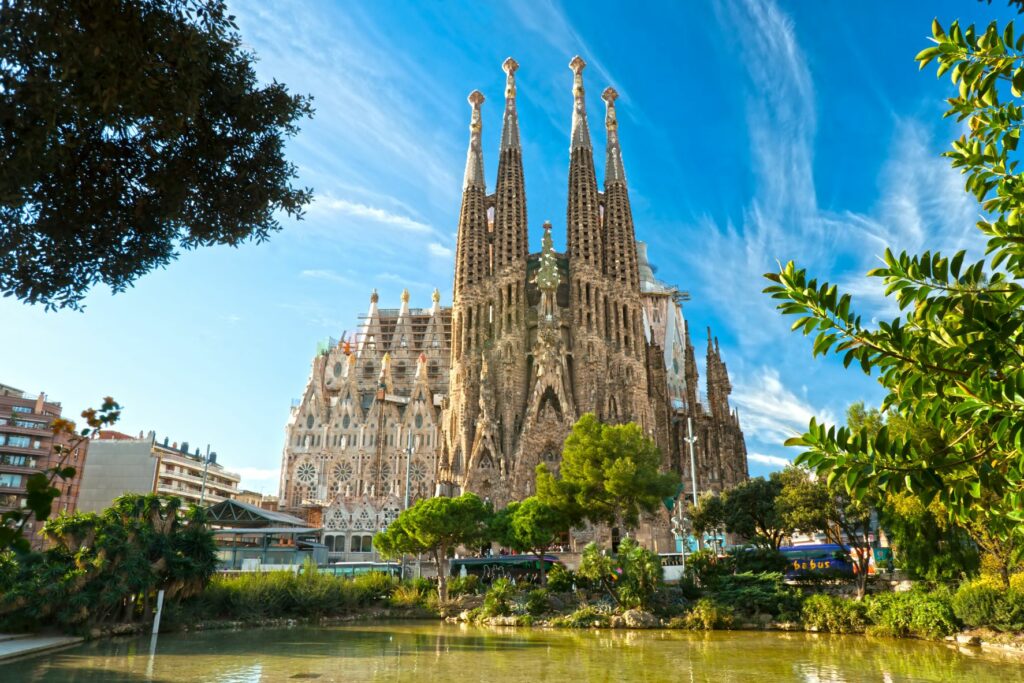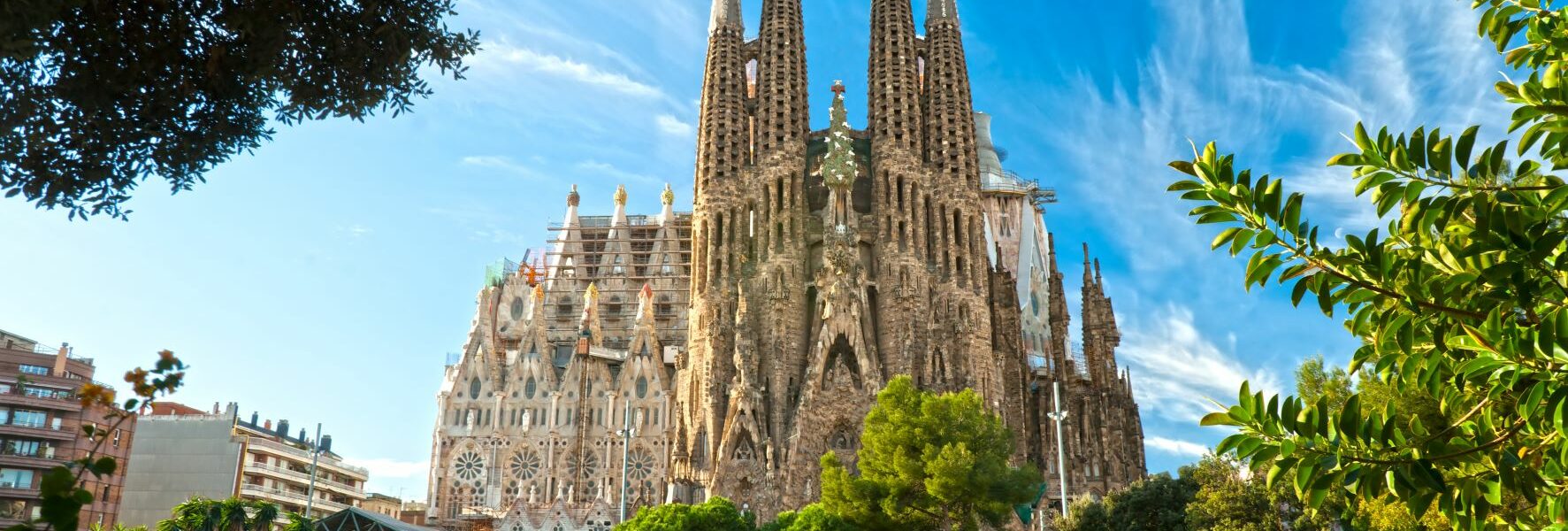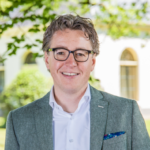
A parallel between the Sagrada Família and IT modernization
It is this time of the year that big crowds across the world are traveling for their well-deserved summer holidays. Many visit exotic beaches, mighty mountain ranges, quiet forests, stunning waterfalls, or vibrant cities. In this blog, I would like to tour the history of the very famous and well-known Sagrada Família in Barcelona, Spain – an ancient basilica that never finishes being built. I see many similarities between the history of this artistic building and Enterprise Software modernization.
Enterprise Software modernization is all about:
- Old legacy systems
- Preventing vendor lock-in
- Businesses urging for innovation
- The role of data
- Etc.
I also see all these elements in the history of this unique building.
Starting the project
It all started in the year 1866 with a bookseller and philanthropist Josep Maria Bocabella who wanted to do something about the declining influence of the Church in society. Thanks to several donations he bought a piece of land (read: he had convinced his key stakeholders to set aside a budget for his project) and on March 19, 1882, the cornerstone was laid (or the first line of code was written) for a building in a neo-Gothic design by the first architect. It was founded by and for the people – in some way analogous to citizen development. The scope was defined, the project relatively clear, and the end goal obvious, so the project could start according to a good Waterfall method.
Overcoming project challenges
However, due to serious disagreements between the architect and the developers, the architect soon decided to withdraw from the project. He was succeeded by the man who would become known as the visionary behind the Sagrada Família: Antoni Gaudí. Gaudí started building the crypt and thanks to an unexpectedly large donation, he could adjust the design of the church at an early stage. His proposal was to leave the neo-Gothic design for what it was. Instead, he designed a much more monumental building with innovative shapes, structures, and techniques.
Indeed: the new project manager listened carefully to the changing demand from the business and took on the project. The call for innovation was loud & clear, and the scope creep had started. Within no time, the management board approved the adjusted budget and the development team was set to work with new courage.
The project’s complexity soon increased and as a result, the architect & scrum master became overwhelmed; from 1914 Gaudí devoted all his time and attention exclusively to the ‘temple of reconciliation’ so he stopped all other work. This explains why there are not many other large Gaudí buildings after this year. He was so involved in the project that he even took up residence next to the construction site. The project’s success had meanwhile become the success of the scrum master & architect, and his mission had to succeed at all costs.
In 1923, he completed his design for the church’s nave and the roof. Another two years later, in 1925, the first bell tower was a fact. Due to the tragic accident, on June 10, 1926, when this talented man was run over by a tram and died, this was the only tower Gaudí would ever finish. Fortunately, he left a beautiful legacy but it was far from finished.
A true project crisis
A new project owner appeared on the scene and a close associate of Gaudí took over. Under his fanatical leadership, several parts were completed, but the next crisis presented itself. A fire between 1936 and 1939 destroyed the construction site. To everyone’s horror and regret, very important work was lost: Gaudi’s original designs, drawings and models.
The project became rudderless after all sprint plans, designs, mockups and prototypes were lost. The believers (assumed to be in desperate need of the new solution) were still dependent on other smaller chapels in the Barcelona area more than 55 years after the start. This was a bit of a blessing in disguise as the promising new system that would solve all bottlenecks was still far from acceptance testing and go-live.
Again a new project owner, budget & plan
Gaudí’s successor apparently had to leave quickly, after a new architect came on the scene who had collaborated with Gaudí. He made many changes to the designs (read: the very urgent process improvements were implemented, because the business wanted to use the latest innovations and see some low-hanging fruit in the new system) – and the work on the church continued steadily. In the year 1955, the project received another much-needed financial injection thanks to a major fundraising campaign. The management obviously did not dare to kill this risky and megalomaniac project, so again the budgets, timelines and scope were adjusted upwards – of course with the strict request that it really had to succeed this time.
Measuring project performance
Fast forward to the turn of the century: the construction progressed little by little, year after year, but meanwhile, the first parts were also ready for the necessary maintenance work and renewal. Five different generations of creators and builders took the complexity of this monolithic structure to unprecedented levels. The now 100-year-old legacy made itself felt more and more, so the ‘law of diminishing returns’ took effect. Each new architect left his own stamp on the design, which in turn caused the necessary confusion among the executors. In the meantime, the business (read: the people – which was the reason for the project) was completely out of sight, and the goal of the project (to increase the role of the Church) was overtaken by reality.
In 2002, Barcelona celebrated the 150th anniversary of the birth of the Sagrada Família. Personally, it feels a bit like celebrating the thousandth bug a customer has logged – but that may be just my subjective interpretation of this beautiful milestone.
In 2010, another important milestone in the history of the church was achieved. Although the church was not yet finished, Pope Benedict XVI consecrated the building. Apparently, the business owner had decided to use the ‘solution’ in phases. Even though the Development phase was still in full swing, the User Acceptance Test still had to be done and the final scope was far from being reached.
Today, 70% of the work of Sagrada Família has been completed. Work is currently underway on the construction of the six central towers. The intention was that the Sagrada Família would be finished in 2026. That would have meant that it could be admired in its full glory for the first time in 160 years. Due to the COVID-19 situation, the church has been closed for many months in recent years, and therefore the main source of income – the sale of visitor tickets – dried up completely for a long time. What the new planning looks like and what the expected go-live date will be, is still a big wild guess. What has become fully clear is that the original goal is no longer relevant so the project itself seems to have become the goal.
So much for the story of this ancient monolith. And now back to Vanenburg.
The Vanenburg alternative
Almost in the same year as the bookseller Josep started his mission in Barcelona, Anna Frederika van Pallandt van Goltstein and her husband were allowed to call themselves the new owners of Kasteel De Vanenburg in 1868. They gave the assignment to design and build a new house. The castle’s foundation dating back to 1645 remained intact with the new construction; the outbuildings were demolished and replaced. Fortunately, the scale of this project turned out to be a bit more manageable – instead of one monolith built over 150+ years, it was decided to develop several smaller buildings (say microservices) that all had their own speed of change.
With an eye for architecture and history, many renovations followed, especially after the purchase by Vanenburg Group in 1996, but always based on the principle of adding business value and keeping the original goal in mind. In other words: continuous improvement while the legacy is slowly dismantled, the generic elements are re-used for the purposes they were designed for and new innovations have been added. As a result, Vanenburg Castle with its roots in the distant past offers all the modern facilities one can expect today while the building’s 17th Century charm remains intact.
Your modernization project
And now your situation: do you continue with the Spanish rigidity of a Sagrada Família project or do you opt for the Vanenburg way based on a tailor-made approach and continuous innovation? We believe that the time of big monolithic systems is behind us. That Modernization of Enterprise software can only occur by using the right modern building blocks (such as Google Cloud) in combination with an experienced team and a smart approach to co-creation with you as a customer.
Vanenburg is happy to help you design and build your dream home, but based on the ‘leave and layer’ approach:
- Control your core monolithic & legacy systems by keeping them generic;
- Open-up your core systems so that missing functionalities and custom components can be added as flexible building blocks;
- Innovate by applying technological innovations to not only save costs, but above all to enable new revenue models;
- And over time, replace more and more of that old legacy which is holding you back and becomes more expensive to maintain.
To sum it up: we understand application modernization in combination with data management. To make it work, integrating with underlying systems and modern cloud infrastructures is crucial to making it work.
So we know the complexity of Gaudí and his men like no other, but we do it in our own Vanenburg way. We look forward to applying our knowledge, ready-made solutions, and unique approach for your organization!
And if you’re traveling or spending the time at home, I would like to hear what inspires you in your daily work – can’t wait to listen to your story. Happy summer 



